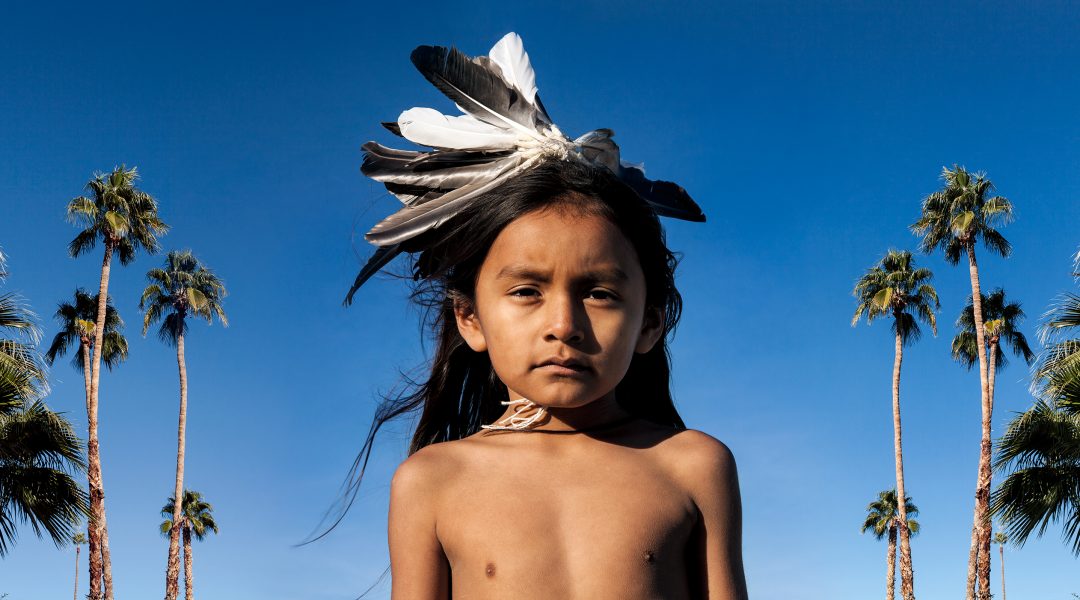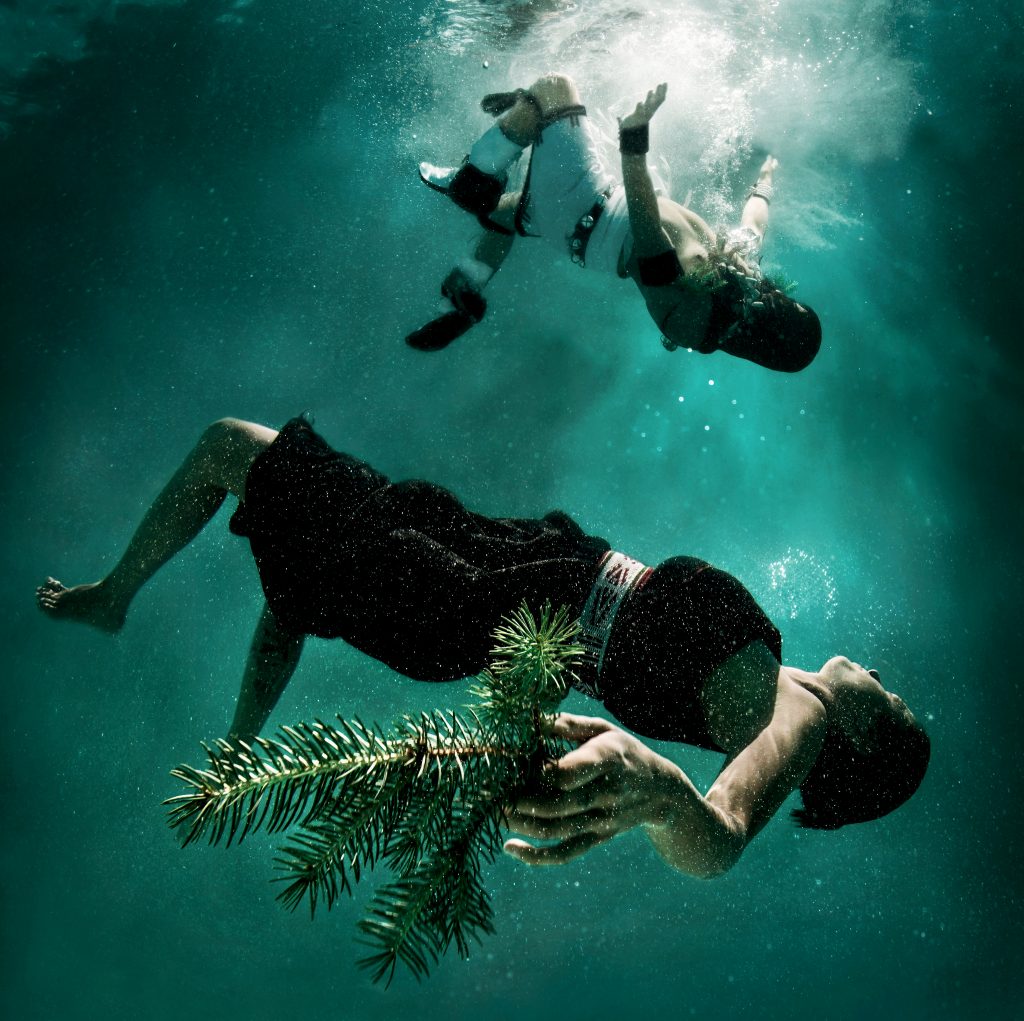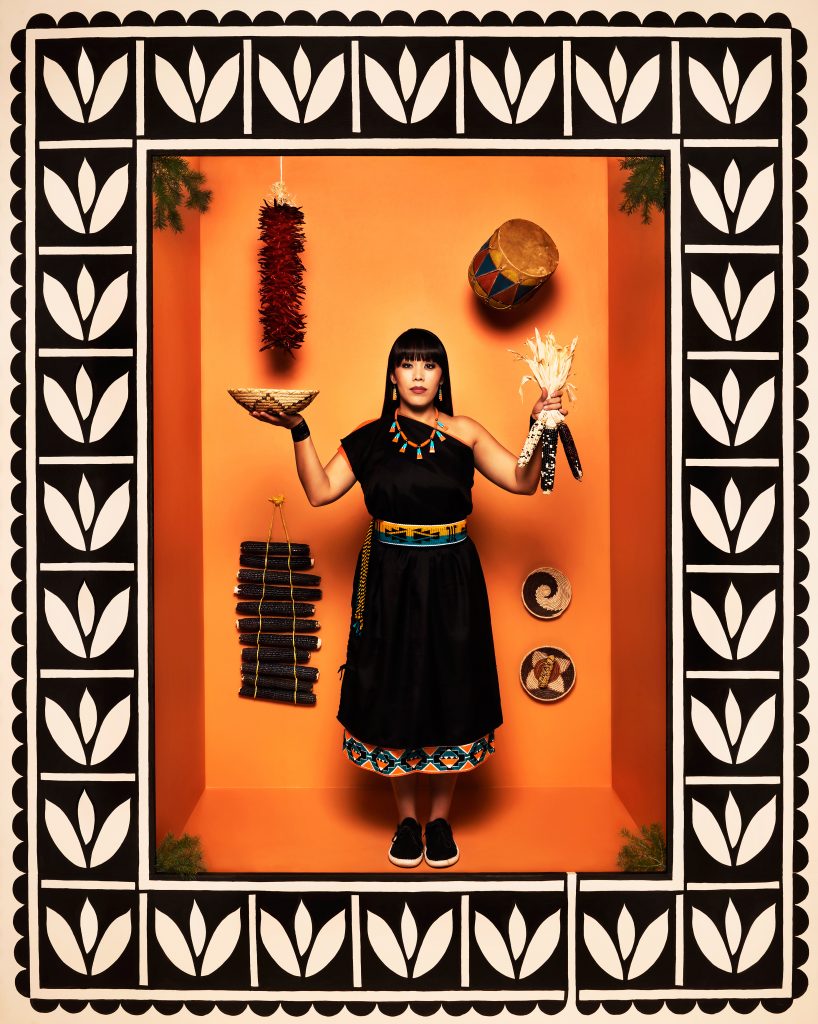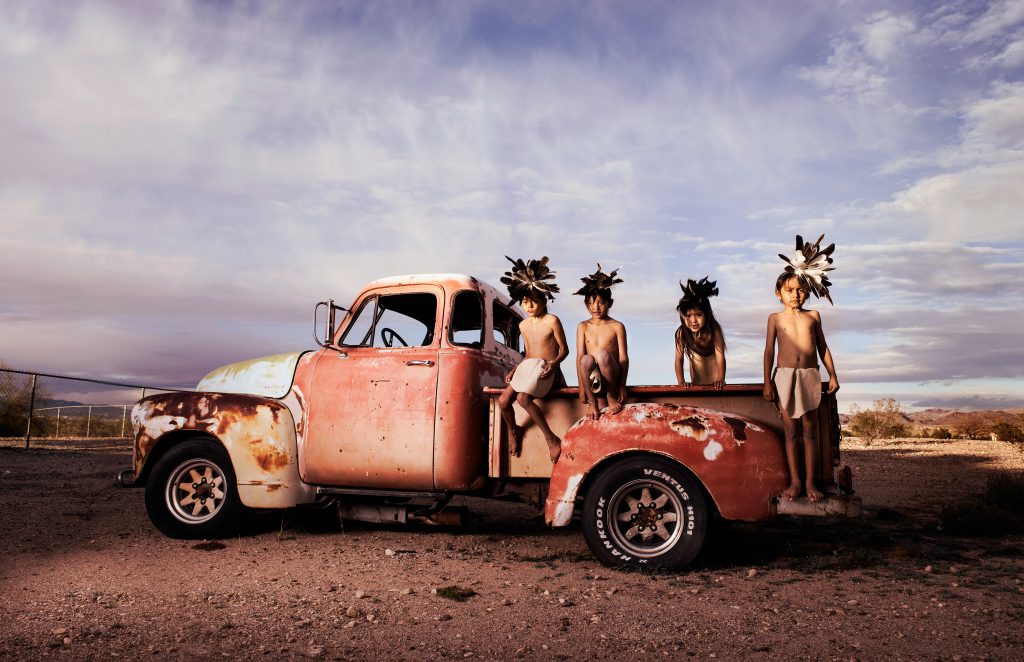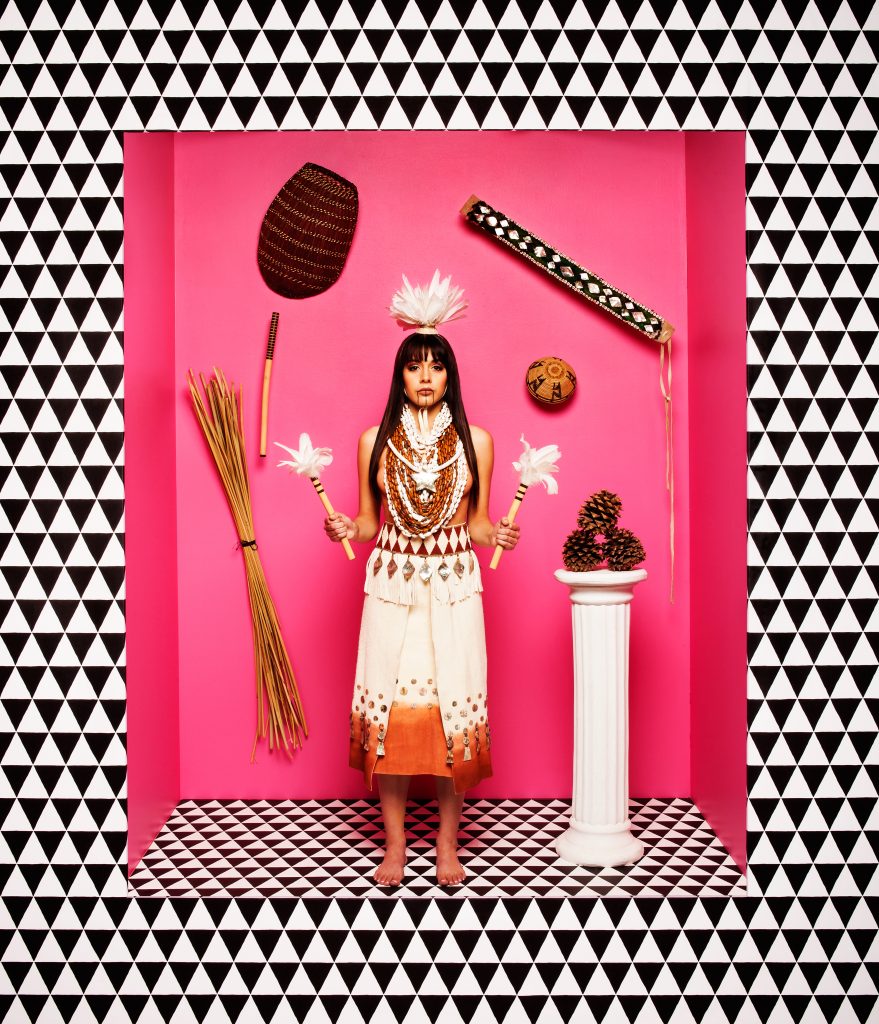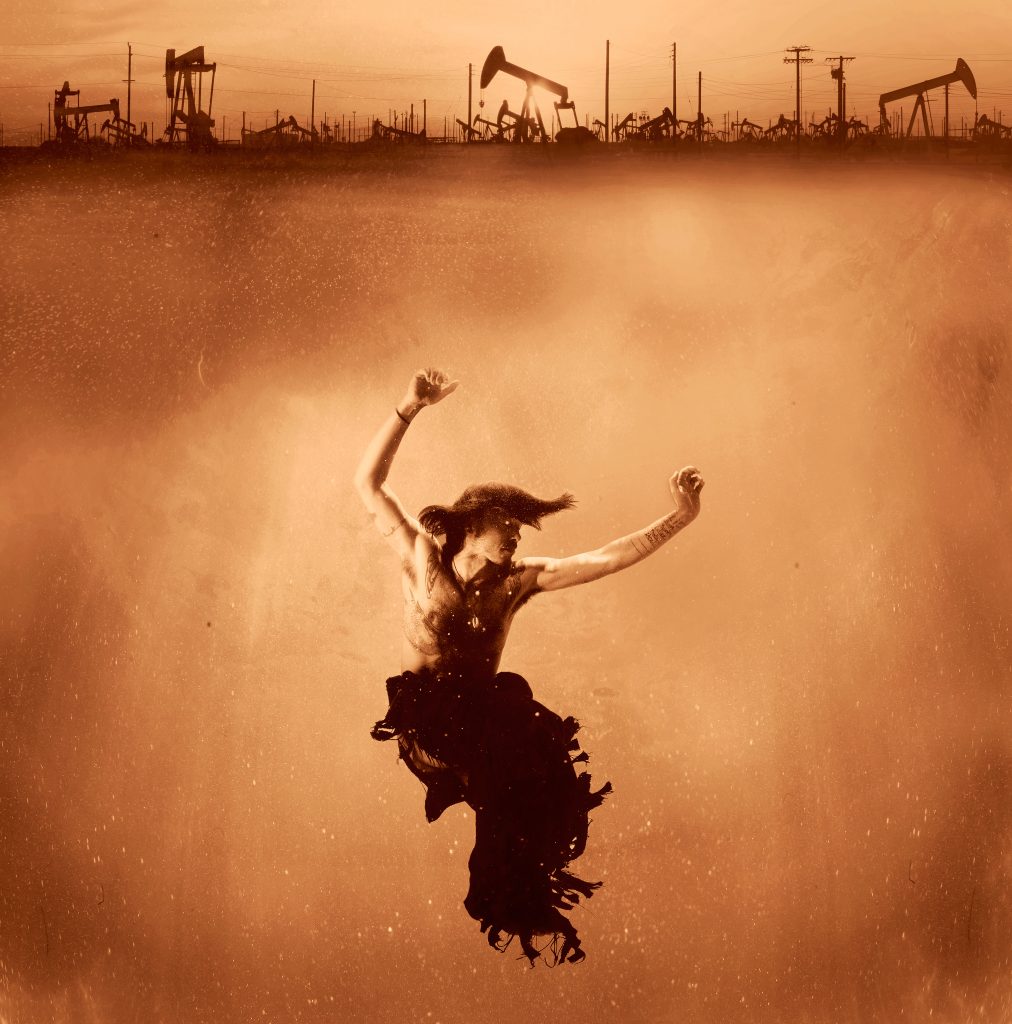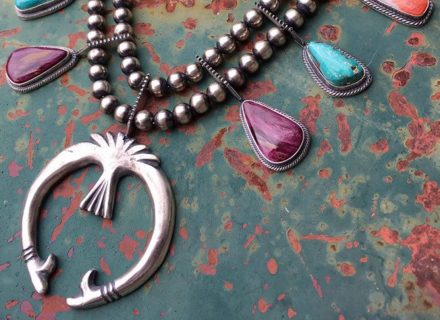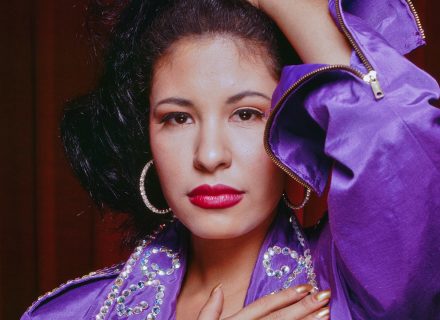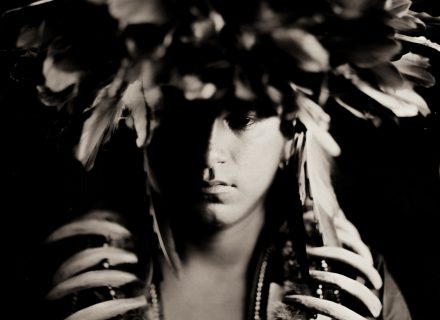Photographer Cara Romero's Indigenous subject matter tackles the big stuff.
It was a big platform from which to make a really big statement. No venue could have been more suited to photographer Cara Romero’s strengths.
From February to April 2019, five images from Romero’s Jackrabbit, Cottontail & Spirits of the Desert series were turned into billboards that greeted drivers along a half-mile stretch of the Gene Autry Trail, a piece of Southern California highway that partly connects L.A. and Palm Springs. The installation was part of the recurring Desert X exhibition. The response to Romero’s contribution was appropriately XL.
“I received more [fan] letters than I could have imagined,” says Romero, who grew up on the Chemehuevi Valley Indian Reservation along the California side of Lake Havasu and now lives in Santa Fe. “People were going out and taking selfies with these billboards, standing on their cars, playing guitars in front of them, trying to look as cool as they could.”
Titled Evolvers, the most arresting image depicted four young boys from Romero’s reservation sprinting through a Mojave Desert wash against a backdrop of giant wind turbines. Visually stunning on its surface, the image continued Romero’s focus on the way industry has impacted Native American lands. Her Water Memory features haunting images of Indigenous figures tumbling through water.
“Our country is built on developing Indigenous landscapes for industry and big energy, from gold in the Black Hills to oil and hydroelectric power to fossil fuel and solar — you name it,” she says. “It’s typically large swaths of seemingly empty landscapes, but those landscapes were not empty. They have a rich history of Indigenous peoples.”
Romero’s deepest work is inspired by the history of her own tribe, which was flooded out of its traditional valley when the U.S. government asserted the right of eminent domain to build Parker Dam and create Lake Havasu in the 1930s.
“A lot of our ancestral territory is under Lake Havasu,” she says. “Many of these [developed] areas were riparian belts full of cottonwoods and willows and wild game and things Natives needed. Our tribe ended up on a windy mesa you can’t farm.”
Big historic events. Big ideas. Big reproductions. The running theme in Romero’s work is no accident. She and her husband, Cochiti potter Diego Romero, often discuss the impact of size on works of art.
“We’ve decided the size of images is just as interesting as the content,” she says. “As a photographer who’s formally trained in commercial and fine art, you want to have tack-sharp images with really high resolution. If you’re able to bring them to a large size, it means there are no mistakes in the file, no digital noise, no flaws in the pixels. It’s really the highest form of craft in photography.”
Part of the goal in presenting traditional Native figures in modern industrial settings is to, as Romero puts it, “examine how our Indigeneity manifests in contemporary times.”
As an artist, she respects the impact of famed ethnographic photographer Edward Curtis and cites his influence. But she wants to move beyond the legacy created by the portraits of Native Americans he took in the early 20th century.
“I think most Native Americans appreciate Edward Curtis’ work,” she says. “Where it becomes problematic is it defined an end to a culture that did not end. We lived on, and we have amazing lives — sometimes happy, sometimes tragic. We live on reservations, we live in cities. I’m interested in all of these ideas.”
Combined with exceptional technical skill and a unique vision, that outlook ensures more big things for Romero.
In February, Cara Romero will have a solo show of some 40 images as part of a Native American film festival in Stuttgart, Germany. Her work will also be on view at the annual Heard Museum Guild Indian Fair and Market, March 7 – 8, in Phoenix; and at Santa Fe Indian Market, August 15 – 16. In the fall, she’ll open a solo show at the San Bernardino County Museum in California and will be part of the exhibition Larger Than Memory: Contemporary Art From Indigenous North America, May 1 – October 25, at the Heard. Romero shows predominantly at her own studio and gallery and online — Cara Romero Photography | Studio & Gallery in Santa Fe — and at Bockley Gallery in Minneapolis. cararomerophotography.com
From our February/March 2020 issue.






